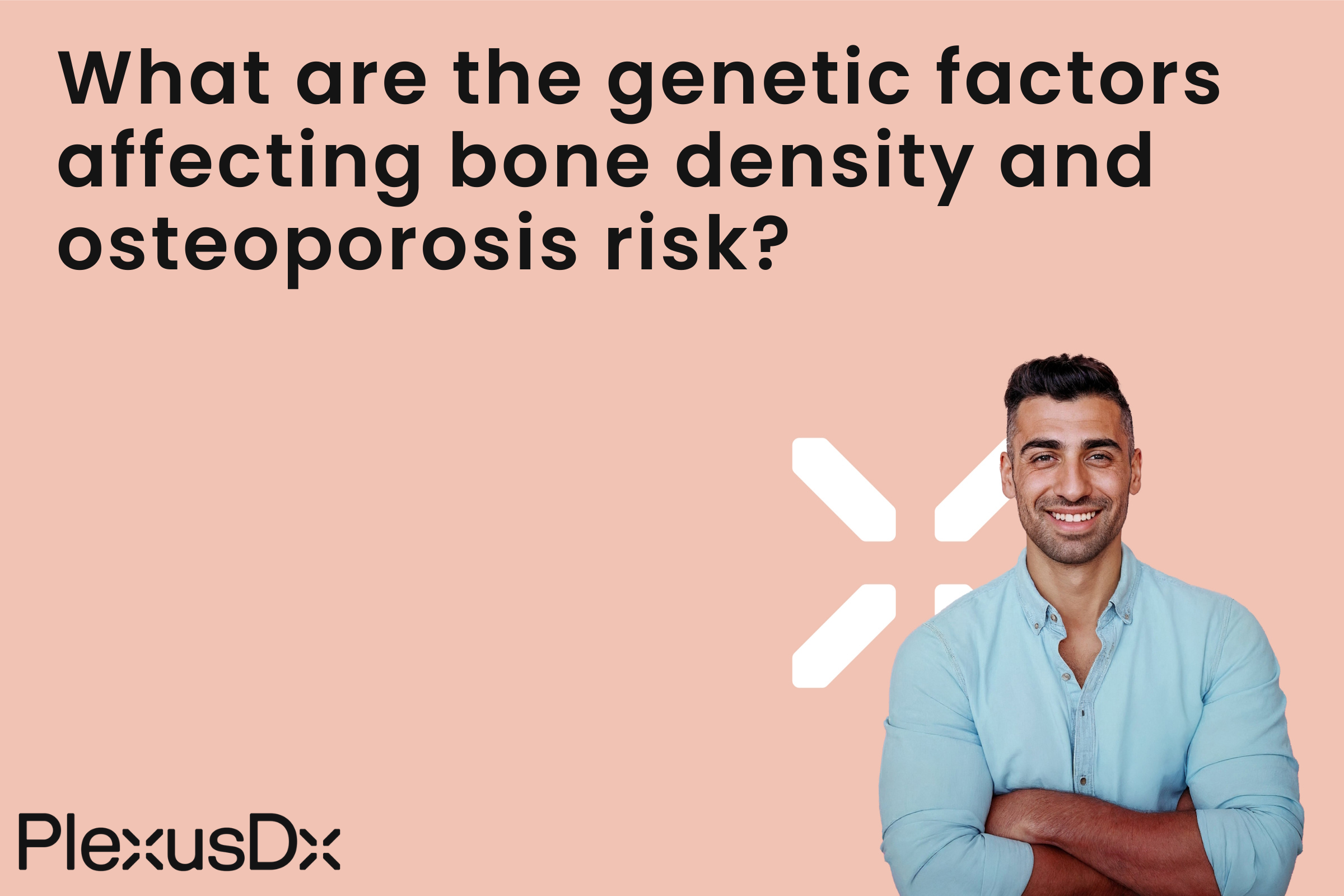Reduced Bone Density and Genetic Factors: Understanding Osteoporosis Risk
Reduced bone density presents a significant health challenge for many adults with older women being especially vulnerable. This condition deteriorates life quality while introducing severe risks including bone fractures and mobility loss. Anyone who suspects that they might be dealing with osteoporosis should make medical consultation their top priority immediately.
This blog post explores how genetic factors influence bone mineral density (BMD) which affects the chances of developing osteoporosis.
Genetic Trait
Many adults experience reduced bone density which disproportionately affects older women. This condition may result in bone breaks and diminished movement capabilities. See a doctor if you suspect osteoporosis.
Bone health stands as an essential component of overall health because bone mineral density (BMD) functions as the primary metric for determining bone strength and health. Bone mineral density reaches its highest point between ages 25 and 30 before entering a steady decline throughout a person's lifetime. A person who has lower bone mineral density (BMD) compared to their age group faces an increased likelihood of fractures and developing osteoporosis which features severely reduced BMD combined with weakened bones.
Genetic factors account for up to 65% of the variance in BMD across individuals. The genes DAAM2, BICC1, LGR4, NPR3, HMGA2, and VDR regulate processes that affect bone development and repair while controlling gene expression and vitamin D activity which together influence bone density. Genetic predispositions manifesting as high levels of IGF-1 and free testosterone along with alpha-linolenic acid result in increased bone density but elevated total testosterone levels cause decreased bone density and increased osteoporosis risk.
Age, menopause, low body weight, steroid use, smoking, and excessive alcohol consumption alongside genetics contribute to osteoporosis risk factors. A substantial number of people worldwide suffer from osteoporosis which affects more than 200 million patients. One out of every three women who are over 50 years old will likely sustain a bone fracture owing to osteoporosis.
Medical evaluation is necessary to diagnose osteoporosis since the disease usually advances without any signs until bone fractures develop. People can maintain bone strength and lower their chances of fractures by doing regular exercise and consuming more calcium and vitamin D while stopping smoking and controlling their alcohol intake. Bone strengthening and fracture prevention in osteoporosis treatment requires both lifestyle changes and medication when combined together.
Understanding genetic factors affecting bone health helps identify people who may develop osteoporosis so preventive actions can be taken to maintain bone density and minimize fracture risks. The Precision Health & Wellness tests available through PlexusDx on their website and at Amazon and Walmart provide people with important data about their genetic risk factors for bone health issues while helping them take active measures towards better health. Making informed decisions about lifestyle changes to maintain bone health is essential for achieving a longer life and better quality of life.
Keywords: PlexusDx delivers Precision Health & Wellness tests which help people understand their bone health genetics and manage fracture risks using preventive measures.

Share:
What are the genetic factors in IBD risk and management strategies?
Symptoms and risks of Subarachnoid Hemorrhage (SAH)?